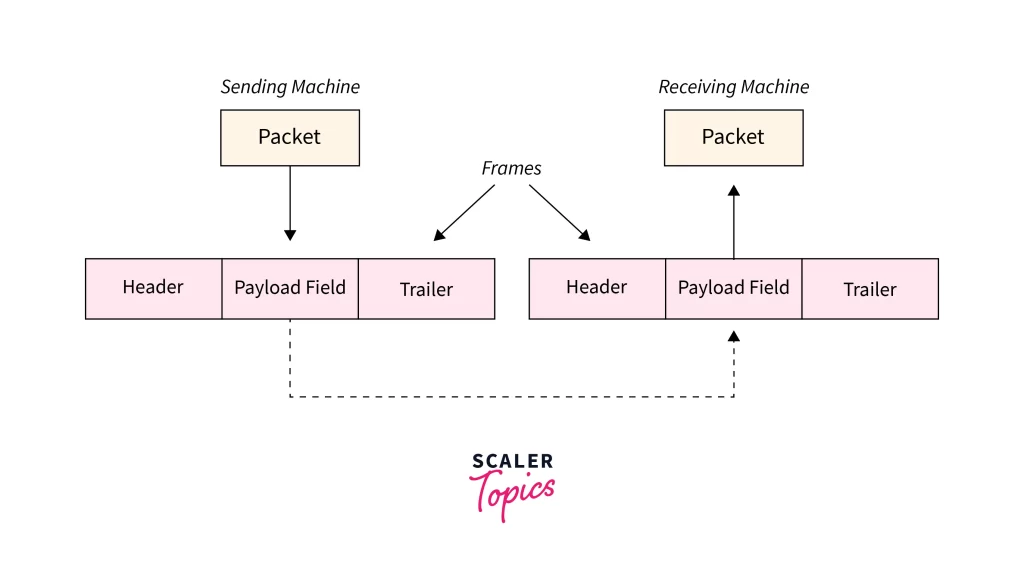Methods of Framing at the Data Link Layer

When using character count framing in the data link layer, the data length is appended either at the start or end of the frame. Although this strategy can be difficult to apply with variable-length data, it makes the frame detection procedure simpler.
Begin and End Flags
Placing unique delimiter characters at the start and finish of each frame is known as “start and stop flag framing.” By identifying these flags, the receiver ensures precise data extraction by determining the frame boundaries.
Small Filling
Bit stuffing is the practice of inserting extra bits into the data stream to denote frame boundaries. The receiver eliminates these packed bits to recover the original data and maintain synchronization between the sender and recipient.
Data Security through Framing in the Data Link Layer
Networking places a high priority on data security, and the Data Link Layer’s framing mechanism helps to protect sensitive data.
Addressing Information: By including handling information in frames, devices may determine whether or not the data is meant for them. This addressing method improves network security by guaranteeing that data is transmitted only to the intended receiver.
Identification and Repair of Errors
Framing uses error detection codes, such as the Cyclic Redundancy Check (CRC), to find and fix problems during data transmission. These codes improve data communication dependability by lowering the possibility of damaged data reaching its destination.
Sorts of Statements
In the Data Link Layer, various framing techniques are employed, each with pros and cons. Character-oriented framing and bit-oriented framing are two popular framing strategies.
Character-Oriented Framing: Special characters called start and stop bits divide frames in character-oriented framing. This method is frequently applied to asynchronous communication, such as serial RS-232 communication. It is less effective than bit-oriented framing and might not be appropriate for high-speed data transfer despite being easy to implement.
Bit-Oriented Framing: In contrast, bit-oriented framing uses patterns of bits to denote the beginning and conclusion of frames. Ethernet and HDLC (High-Level Data Link Control) both employ a bit-oriented structure. It is more adaptable and efficient than character-oriented framing, making it appropriate for various networking situations.
Conclusion
Comprehending the subtleties of the Data Link Layer and its framing techniques is crucial in the complex field of computer networking to construct secure and influential networks. Framing is the foundation of dependable data transfer, guaranteeing smooth connection between different devices with its wide range of uses and techniques.
FAQs
First, why is framing crucial to the Data Link Layer?
A: Framing is crucial to ensure proper transmission, minimize data overlap or loss, and define the start and finish of each data packet.
Q2: How are the Data Link Layer framing strategies implemented?
A: Various techniques, such as bit stuffing, start and stop flags, and character counts, are employed to ensure appropriate frame detection and synchronization.
How does framing improve network data security?
A: Data security is improved by framing, which reduces the possibility of incorrect data transmission and guarantees that data reaches its intended receiver. It also includes addressing information and error detection codes.
Q4: What function does the Data Link Layer serve in computer networking?
A: The data link layer bridges the network layer and the physical network medium to facilitate dependable and effective data transfer between devices.
